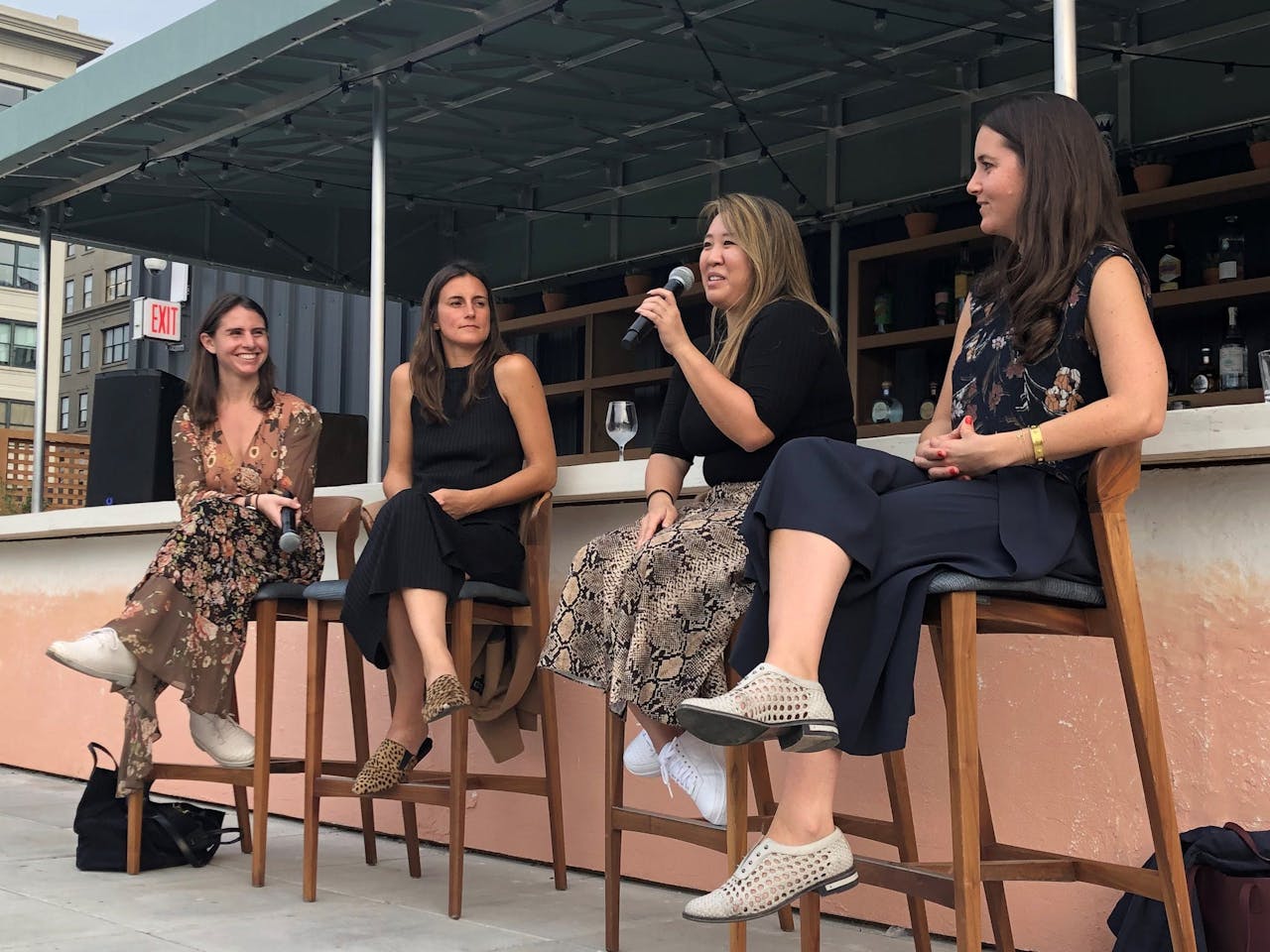From Digital to Physical: Opening Your First Store
What is the future of brick-and-mortar retail in a world of direct to consumer and digitally native brands?
Learn from the best - subscribe to our clienteling newsletter now.
Latest posts in Modern Retail
There has been a whirlwind of industry chatter surrounding the "retail apocalypse" and the rise of digitally native, direct-to-consumer brands. But what is hype, what is reality, and, perhaps most importantly, what place does physical retail actually have into today's landscape?
This past Wednesday, our co-founder, Leigh Sevin, hosted a panel of amazing female founders tackling just that question. Panelists included Max Bonbrest of AYR, a lifestyle focused apparel company, Denise Lee of Alala, specializing in luxury fitness apparel, and Christina Bryant of St. Frank, an artisanal home decor brand.
Why brick-and-mortar retail?
All three founders launched their brands online before dipping their toes into the brick-and-mortar space. Lee, who initially made her mark in the wholesale space, saw company-run retail as the next step in developing the voice of her brand. "As we really thought about where we wanted to take Alala, having an avenue to tell your own story directly to your customer was really important to us," she said.
In the home decor space, Bryant didn't necessarily feel that expanding into physical retail would translate into profitable stores right away, if ever. Still, she felt it was essential for the company to grow. "[We] really believed that the more holistic experience of inviting someone in the St. Frank home and really getting to know and meet our customers and getting customer feedback would be powerful," she commented.
But as it turned out, the St. Frank stores delivered even more value than initially anticipated. "It was a really powerful tool to drive customers online and build really long lifetime value," said Bryant. "Within one year, our customers who were shopping from us both in store and online where worth about three times the customer just shopping online."
Stores as a marketing tool
Bonbrest described AYR's transition into brick-and-mortar as an exploration into an experiential marketing channel for clients. This includes "everything from the smell, to the playlist, to the fixtures, the way that the store looks, and how the product is merchandised when you walk in," she highlighted. AYR even worked to create a custom fragrance for all their locations, crafting a consistent and memorable experience for everyone who walks through their doors.
For St. Frank, though 70% of their sales still come from their ecommerce channel, curating an engaging environment that encourages social sharing was key. "We thought about how to create visually Instagrammable vignettes within the store," said Bryant. "It was a huge tool for word of mouth and organic press."
And while our panelists found their ability to turn a profit in brick-and-mortar retail surprisingly successful, the true value transcended those direct sales, resonating in the storytelling nature of an in-person experience.
Sales associates as a resource
What lies at the core of an impactful in-store experience? For AYR, their primary marketing channel has always been their staff. "Life to date, personal clienteling both online and in person has been our number one sales driver," said Bonbrest. "Our sales associates are our best brand ambassadors, so hiring has been the most important piece of our puzzle."
Lee reinforced this theme as well. "Having a really great sales staff who is able to clientele and tell the story, even to somebody who has never been in the store before, is one of the things we are really focused on."
Deepening the customer relationship is essential to the loyalty loop for any brand. And for those with a physical presence, store associates hold so much power in this equation and in the qualitative feedback they can provide.
Your leverage as a retailer
So is the retail apocalypse real?
"I think the retail apocalypse is real," said Bonbrest. "Unfortunately for big mall brands and large retailers who are too big to pivot [...] But it's also opened up a lot of opportunity for small more nimble brands, like AYR, to experiment with retail."
With this shift in the industry, smaller retailers have more bargaining power to negotiate shorter, more flexible leases with landlords. Leading to a steady stream of pop-ups, pop-ins, and other buzzworthy activations that are engaging modern consumers on a new wavelength.
"In Atlanta, we were able to negotiate a percentage of sales, so we didn't pay any rent at the store at all," Lee noted as she described Alala's pop-up experience. "There is so much empty space out there that you are able to get creative with the terms that you negotiate with your landlords."
Technology's role in-store
So certainly a physical retail presence can hold a wealth of value, even for digitally native brands. But next comes the larger omnichannel question: how you do synthesize this customer data and how do you measure results?
"We are really lucky that we live in a time where there are so many templates out there, plug and play solutions, from a technology perspective," mentioned Bryant, thus making it easier for brands to focus their attention deepening their customer relationships and educating their staff to be true brand ambassadors. Technology integration via CRM and clienteling tools, like those that Endear offers, makes it easy to track both quantitative figures and qualitative notes, arming your staff with the information they need to take your business to the next level.
What is the future of retail?
Retail is not dead. It has just taken on new forms and functions in the path to purchase. In a world where consumers are looking for increasingly personalized, high-touch, and experiential elements when making their buying decisions, the omnichannel strategy can provide a valuable storytelling avenue and essential feedback loop. This is a level of insight that brands aren't getting through strictly online channels and a powerful growth opportunity for up-and-coming players in the market.
